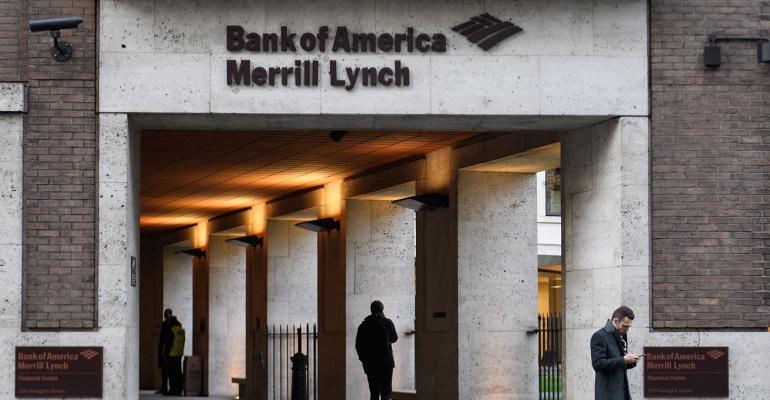Bank of America’s Merrill Lynch revealed its 2019 compensation plan for its advisors on Thursday that included a trim to advisor compensation meant to reduce the brokerage’s highest cost and encourage continued growth.
The most significant change to next year’s compensation plan was the brokerage’s decision to alter how it calculates what it pays its 14,820 advisors. In 2019, Merrill Lynch advisors will be compensated for 97 percent of their production credit, down 3 percent compared to 2018, when they were compensated on 100 percent. The change was first reported publicly on Advisorhub.com.
To be sure, Merrill Lynch was an “outlier” for not having a so-called holdback on the production credit used to calculate an advisors compensation, Andy Sieg, head of Merrill Lynch Wealth Management, told reporters during a conference all about the changes Thursday evening.
The move wasn’t anything out of the ordinary, said Andy Tasnady, the managing partner of Tasnady & Associates, a consulting firm that works with large broker/dealers on creating compensation plans. He said the holdback is comparable in scope to what Merrill Lynch competitors have done as they try to balance promoting growth and increasing revenue with compensation, their largest expense. “This is more of a tremor, not a major earthquake, and I don’t think it's a signal of any major change or a big shift,” he said.
For example, an advisor with a monthly production credit of $100,000 in 2019 will be compensated through Merrill Lynch’s plan, or growth grid, for $97,000. That means some advisors stand to earn less in 2019 but if the same policy had been in place this year, more than 90 percent of the advisors who are growing their business and reaping improved awards would have been net positive, the brokerage said.
Production credits are represented as a dollar amount but are not equivalent to the revenue an advisor generates for the firm, because advisors are paid less on a dollar-for-dollar basis for some products and services, a Merrill Lynch employee familiar with the compensation structure told WealthManagement.com.
Merrill Lynch also put a $4,000 cap on what the 3 percent trim to compensated production credit can equate to, a break for higher producers. For example, a financial advisor with a monthly production credit of $200,000 would be compensated for $196,000 (even though a 3 percent cut of $200,000 would mean a $6,000 reduction).
“Our [2019] compensation plan is designed to continue growth and performance and to make sure our growth is sustainable,” Sieg said. He also said advisor compensation will reach record levels in 2018 and the brokerage still expects to beat that total next year.
Unlike other methods brokers use to reduce compensation, such as “stretching” their grids to eliminate some advisors from the pool of award earners, Tasnady said paying a lower percentage of production credit is more transparent. They can easily calculate what they can expect to make relative to their production credit without any product or service bias, he said.
Client assets continue to flow to fee-based accounts but there are still many advisors with businesses generating predominantly from brokerage revenue.
Sieg told reporters that changes to the compensation plan were made based on feedback from the thundering herd, as well as input from a compensation committee comprised of advisors. But one registered investment advisor called the changes “insane” on Twitter.
The brokerage also made changes to and raised the hurdles of its grid that awards advisors for bringing in new business. Beginning next year, Merrill Lynch advisors will accumulate anywhere from one to four credits, based on the investable assets of each new household, and will need six household credits to qualify for the growth award, an additional 2 percent bump to the compensation paid based on their production credit.
In the previous compensation plan, advisors needed a total of five new households with at least $250,000 of investable assets.
Along with the six household credits, advisors’ net new asset and liability flow requirements in the new plan remained at 5 percent of prior year-end balances with a maximum hurdle of $15 million.
Minimum hurdle requirements are also still in place. Advisors who don’t accumulate four new household credits and achieve new asset and liability flows at 2.5 percent of prior year end balances, with a maximum hurdle of $7.5 million, will face a 2 percent reduction.
To continue to encourage advisors to refer clients to Bank of America, Merrill Lynch increased the financial incentives it pays advisors for checking and savings account balances to 14 basis points, up from 4.





